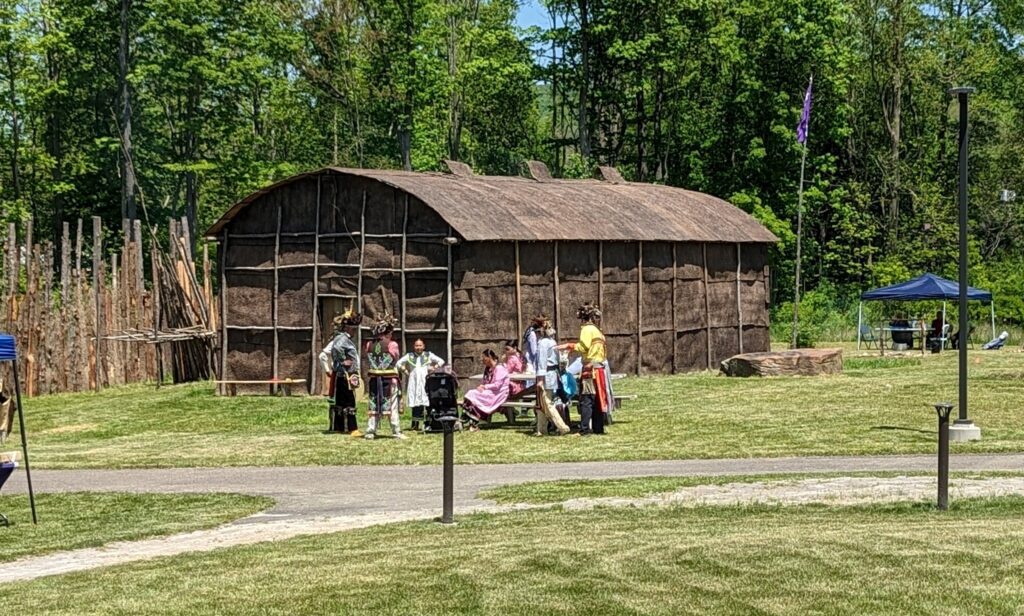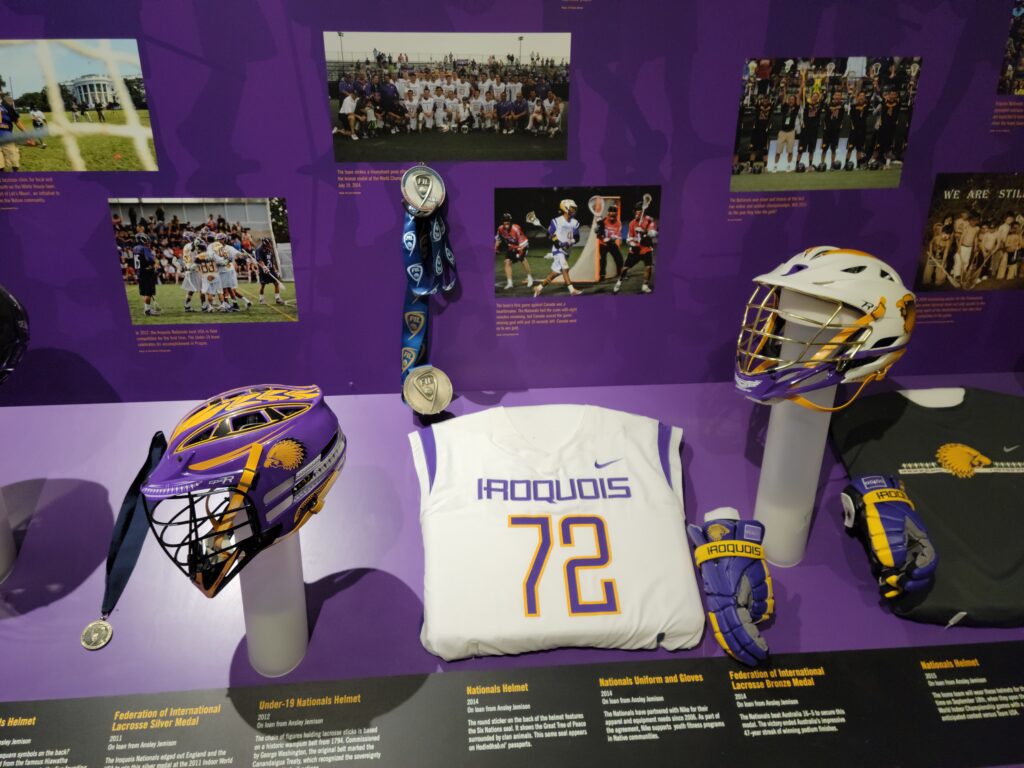by Amy Covell-Murthy
Indigenous Peoples’ Day is observed in the City of Pittsburgh alongside Columbus Day, and I would like to suggest some ways to observe the holiday for those who do not claim Indigenous heritage. In a state with no habitable federally recognized Indigenous land, Native people are all too often seen as existing only in the past. While educating yourself on the Indigenous history of the region is an important part of observing the holiday, it’s also important to recognize that many First Nations people live, work, and play in the Greater Pittsburgh Area. Indigenous Peoples’ Day should not be a memorial, but a recognition of the important history and cultural heritage of those who are the past, present, and future caretakers of this land. Here are some things you can do to respectfully celebrate on October 9, 2023.
Educate Yourself
Learn about the people who have called Pittsburgh home. Many different cultural groups have occupied the Upper Ohio River Valley including but not limited to the Delaware/Lenape, the Haudenosaunee, the Shawnee, and the Wyandotte. The Osage Nation also claims origin in the Ohio River Valley, and you can learn about all these nations on their official websites. I also suggest hitting up your local library to check out books on these groups as well as the cultural traditions and ancestors who came before them. This region was home to those who are often referred to as the Adena, Hopewell, and Monongahela. But keep in mind, we have no idea what they called themselves. Here are some resources:
Eastern Shawnee Tribe of Oklahoma
Educate Yourself Some More
Learn about the history that may have been left out of your primary and secondary school curriculums. You may be unaware of the atrocities that Indigenous people faced in the State of Pennsylvania. Many First Pennsylvanians were forced from their homelands and infected with unfamiliar diseases by colonizers. Later the first assimilation school was created in Carlisle, PA and used as a model for 24 more of these institutions whose primary goal was to force Indigenous children to abandon their Native languages and customs. In the 1960s, the building of the Kinzua Dam forced Seneca Nation citizens to move into the State of New York, breaking the 1794 Treaty of Peace and Friendship. Indigenous communities thrive despite these events and institutions, but it is important to recognize and not try to hide these gruesome parts of our shared American history. You can find more information about these examples on these websites:
Kinzua Dam (Seneca-Iroquois National Museum)
The Lenape and Colonization (Delaware State Parks Adventure Blog)
Carlisle Indian School Project
Support Local Indigenous Groups
The Council of Three Rivers American Indian Center (COTRAIC) is a regional intertribal nonprofit that promotes the socio-economic development of the Native American community and others who experience the same type of economic difficulties in the Greater Pittsburgh metropolitan area. One way to support them is to plan to attend their annual Pow Wow that is held in Dorseyville, just outside of Pittsburgh, in late September. Learn more about their Early Childhood Education, Native American Elders, Veterans, and Employment programs at COTRAIC.org and on their Facebook page.
I’d like to highlight COTRAIC’s Singing Winds Food Pantry this year. Learn more, donate, or sign up to receive help meeting your personal and family food needs.
Honor the Land
Planting Native Pennsylvanian plants is a wonderful way to honor our connection to the Earth and to provide food and shelter for the diverse species who live here. You can learn about how Indigenous People use trees, ferns, flowers, vegetables, fruits, and grasses to enhance their quality of life. The Pennsylvania Department of Conservation and Natural Resources and the Audubon Society of Western Pennsylvania offer suggestions for those who are interested:
Landscaping with Native Plants
List of Western PA Native Plants
Attend an Online or In Person Event
Many cities around the United States hold events to celebrate Indigenous Peoples’ Day. A quick Google search can point you in the right direction. I’m going to be learning from visiting scholar Dr. Jessie Ryker Crawford on October 9 at noon in Carnegie Museum of Natural History’s Earth Theater for the Moriarty Science Seminar. Dr. Ryker-Craford’s program is titled, “Academia and Indigenous Communities: Opening the Doors to Collaborative Research and Community-Driven Projects.”
You can find a calendar of events hosted by the National Museum of the American Indian here.
Support Indigenous Artists, Authors, Film Makers, and Musicians

You have so many options! The Sundance Institute has released a guide to the Indigenous works at the 2023 Sundance Film Festival. The website of Carnegie Library of Pittsburgh offers staff picks and lists of Indigenous authors. The Canadian Broadcasting Corporation released a list of Indigenous musical artists to watch out for in 2023. My personal favorite is Hayley Wallis (What a voice!). Vogue featured 21 Indigenous Artists to watch out for from this year’s Santa Fe Indian Market. The list includes fashion designers, painters, beaded and metal jewelry designers, sculptors, and textile artists. You can also support Indigenous artists by purchasing art through the online gift shop of the Seneca Iroquois National Museum/Onöhsagwë:de’ Cultural Center or take a drive up to purchase something in person and see the new longhouse that they’ve built behind the museum.
Help Change Derogatory Mascots and Place Names
Sign petitions, attend community forums, and advocate for the changing of harmful stereotypes and offensive signage in our community. From the Cleveland Guardians to Hemlock Hollow Road, there are many instances of this happening around us. The National Congress of American Indians offers resources to help end the era of harmful mascots.

Also, learn about the Haudenosaunee Nationals Lacrosse Team, who hope to make it to the 2028 Olympics! Learn about how they changed their name in 2022 to reflect their collective identity and donate to help them reach their goals if you are able!
Consider Donating Time or Resources
The Seneca Iroquois National Museum/ Onöhsagwë:de’ Cultural Center is only a few hours drive from Pittsburgh and occasionally may be looking for volunteers. Check their website and follow their social media accounts for more information.
View this profile on Instagram
If you are able, here are just a few organizations who can use your help:
Native American Agriculture Fund
Association of American Indian Affairs
Advancing Indigenous People in STEM
So, join me once again in unlearning some Columbus Day myths and celebrating the cultural diversity of Indigenous People throughout the history of our region. Remember that the best places to start educating yourself are the local libraries and museums. Carnegie Museum of Natural History offers guided tours of our cultural halls that strengthen the messages we wish to share with the community. Visit the Alcoa Hall of American Indians to learn more about the Tlingit, Lakota, Hopi, and Haudenosaunee, and keep in mind that there are so many other Indigenous groups, traditions, nations, and organizations for you to explore on your own!
Amy L. Covell-Murthy (she/her) is Archaeology Collection Manager/Head of the Section of Anthropology.
Related Content
Bringing a Little O-Gah-Pah to Pittsburgh
Staff Favorites: Dolls in the Museum’s Care
Carnegie Museum of Natural History Blog Citation Information
Blog author: Covell-Murthy, AmyPublication date: October 2, 2023
